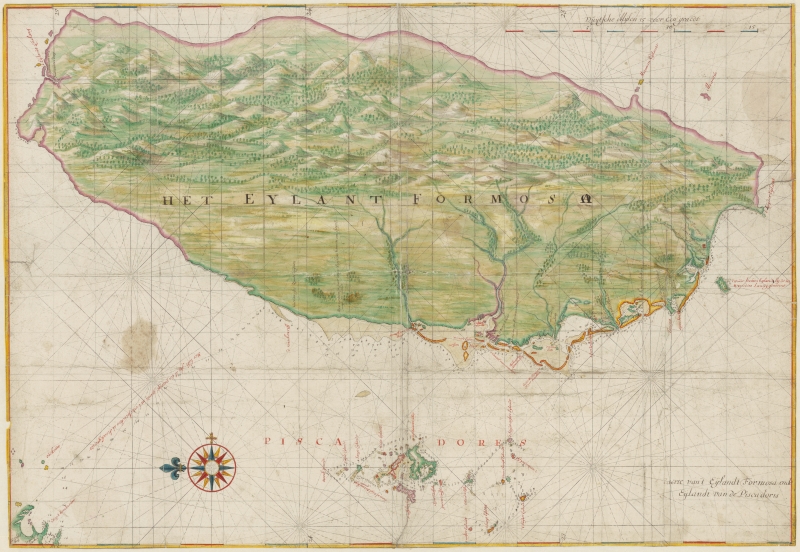Netherlands Exploration: Shaping Taiwan's History, Culture, and Language
26 January 2024 /

European Age of Discovery
The European Age of Discovery was a period of time spanning from the 15th to the 17th centuries during which European nation states explored beyond the bounds of their continent in pursuit of new areas of economic development. Among several nations, the Netherlands were active in colonial pursuits and developed a strong relationship with Taiwan to establish a foothold in the East Asian spice trade, facilitated by the island's gateway connections. The Dutch East India Company (VOC) played a pivotal role in shaping this historical interaction.
The relationship between Taiwan and the Netherlands reached a turning point in 1662 when Ming loyalist forces, led by Zheng Chenggong (Koxinga), successfully edged out the Dutch from Fort Zeelandia. This marked the end of the Dutch colonial era in Taiwan. While the Dutch presence in Taiwan was relatively short-lived, lasting less than four decades, it left a lasting impact on the island's history.
The exchange of ideas, cultures, and goods during this period laid the groundwork for future interactions between Taiwan and the wider world. The legacy of this historical relationship is still evident in Taiwan's diverse cultural heritage and its openness to international trade and cooperation.
Western discovery of Formosa
Sailing under the Portuguese flag, explorer Jorge Álvares is credited with being one of the earliest Westerners to set eyes on Taiwan in 1513. However, it wasn't until 1544 that another Portuguese explorer, Fernão Mendes Pinto, provided a more detailed account of the island's geography and its inhabitants. Pinto's writings described Taiwan as an island rich in resources, populated by indigenous peoples with colourful customs and practices.
Portuguese sailors gave the island the name "Formosa" meaning "beautiful" in Portuguese. It was a testament to the scenic landscapes they observed. This name gained prominence in European maps and writings and was later adopted by the Dutch during their colonial occupation.
The discovery of Taiwan had far-reaching consequences, shaping its history as it became a focal point for international trade, cultural exchange, and geopolitical maneuvering. Over the centuries, Taiwan's identity evolved through interactions with various foreign powers, not only The Netherlands, leaving a lasting impact on its cultural landscape and global connections.

Encounters in Taiwan
The indigenous peoples of Taiwan, including various Austronesian-speaking groups, were the first to engage with European explorers. Initial encounters were motivated by mutual curiosity, as indigenous communities observed the arrival of foreign ships and unfamiliar faces. These interactions led to the sharing of knowledge about navigation, agriculture, and daily life.
European explorers brought crops such as sweet potatoes, corn, and peanuts to the island, contributing to the diversification of the local diet and in return, indigenous communities shared their agricultural practices and local produce, creating a rich blend of culinary traditions that endure in Taiwan today. The establishment of European colonies on the island, such as Fort Zeelandia (Fort Anping in Tainan) by the Dutch, brought about sustained cultural exchange as well as colonial oppression.
These early cultural encounters set the stage for a long-term relationship between the Dutch and Taiwan and formed the island's subsequent history, influencing its language, cuisine, and religious practices. The legacy of these interactions is evident in the diverse and vibrant cultural tapestry of modern-day Taiwan, where traces of both indigenous traditions and European influences still endure.
Revival of the Siraya Language
The revival of the Siraya language in Taiwan is the result of significant effort to reclaim and preserve the linguistic and cultural heritage of the Siraya people, an indigenous group who traditionally inhabited the southwestern plains of Taiwan, particularly in what is now Tainan City. During the Dutch colonial occupation of Taiwan, which, in addition to trade activities, involved Calvinist evangelism, several scriptures were translated to Siraya and Babuza (the original languages of Taiwan's indigenous people).
By the mid-20th century, the language was near extinction, with only a handful of elders keeping it alive. However, through a surprising twist of fate, translated materials (the effort facilitated by Dutch missionaries) had been sent to the Philippines where they were preserved for several hundred years. The discovery of these documents has been instrumental to reviving the Siraya language, in addition to the enormous efforts of community members, linguists, and cultural activists.
Efforts resulted in the development of teaching materials, dictionaries, and language courses. Additionally, community events, cultural festivals, and multigenerational activities have created an immersive learning environment pairing pride in language and culture. The revival of the language is a testament to the resilience of indigenous cultures and their commitment to reclaiming and celebrating their heritage.
